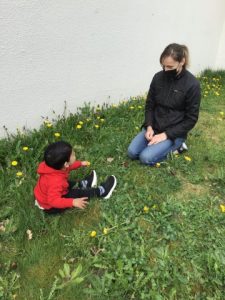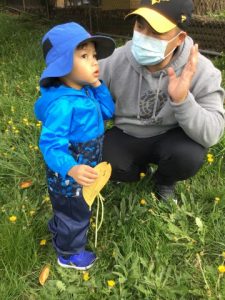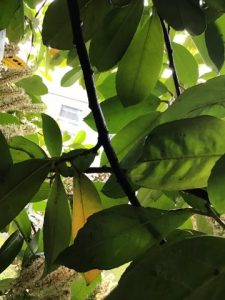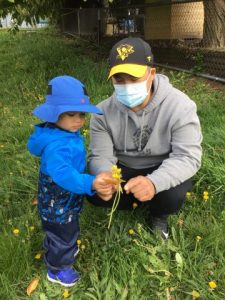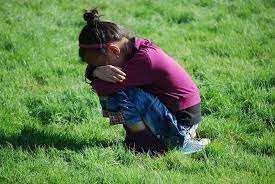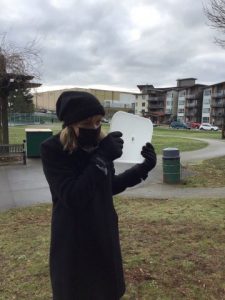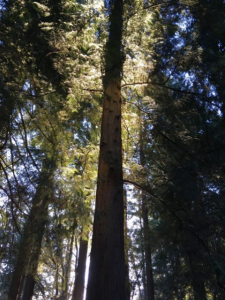Hi StrongStart friends,
Sunny weather is here and it’s time to take out the bubble solution and have some fun!
We had fun the other day at StrongStart making gigantic bubbles. Thanks to teacher Beth for making the special wands for us! We used this Recipe for Giant Bubbles:
- 6 cups of warm water
- ½ cup of Blue Dawn original dishwashing detergent
- 1 Tbsp of corn syrup (or glycerin, if you happen to have some)
Mix all of the ingredients together (gently!). The bubble liquid gets better the longer it sits, it should sit overnight at least. The solution gets better with age and should last a while! Tip: just dip wand into the solution, don’t stir or swish, otherwise it creates small bubbles and stops working.
It took some practice. Grandma was modeling and soon- success! A gigantic bubble!

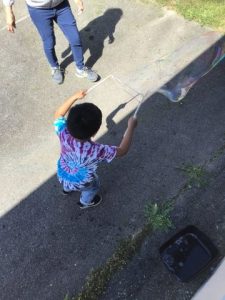
Chasing bubbles was so much fun too!
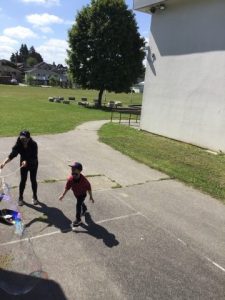
Sometimes we just watched how big bubbles make amazing shadows!
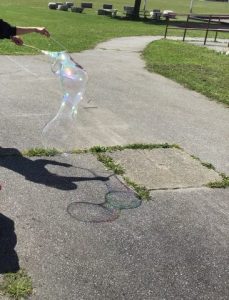
Sometimes you blow and see them getting bigger and bigger.
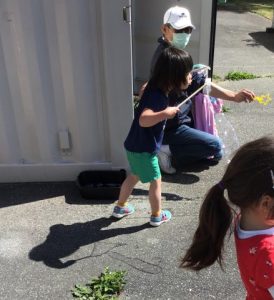
Sometimes they just pop! 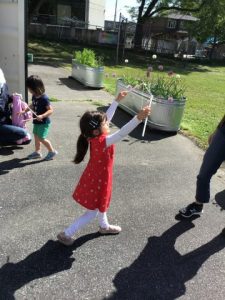
Babies love floating, glistening bubbles too, what a joy to watch their faces as bubbles shimmer in the sun. The bubbles will help build their eye-hand coordination as they will want to reach out and touch them! What a wonderful sensory discovery! What happens when you touch a bubble? How does it feel? Show your toddler how to blow gently and slowly, show them how to pop bubbles by clapping them between your hands. What a delight and endless fun as they will be chasing after the bubbles to do it again, and again! Good for their physical development too. By talking about different actions and textures you will help children grow their vocabulary as well.
By adding songs you will enrich their experience. I was inspired to learn a few new ones from the book Bubble Play published by Key Porter Books.
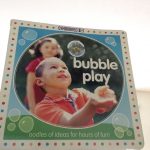
Click here to watch Ms. Lillian sing bubble songs.
For older children we can try counting bubbles, catching them with your hand or your spoon or in a plastic cup. We can chase them, pop them on your nose, on your neck, dodge them, float them by waving a leaf or a hand to make a motion. Bubbles help us wash our hands, we can wash our dog, we can wash our dolls or toys with a bit of soapy water.
If you do not have a ready bubble solution, you can make your own.
Another Home Made Bubble Solution (Using Sugar)
Mix 2 Tbsp of dish soap (Joy and Dawn seems to work the best), 1 cup of water and 1 Tsp of sugar. Stir gently until sugar is dissolved. Pour the solution into a container and use bubble wands to blow huge bubbles. There are many other recipes, but most require glycerin.
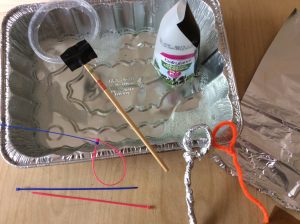
I made some wands from objects I found at home: zip ties, twisted pipe cleaners, a long piece of aluminum foil which I twisted tight, a cut-out lid attached to a chopstick with a piece of duck tape. I made a cone out of a cut-out milk jug with a 6-7 cm opening at one end, secured again with a duck tape (that one made the best bubbles!).
You can paint with bubbles (by adding a tiny bit of paint in the solution in a tray and then blowing them and making them pop on a paper.
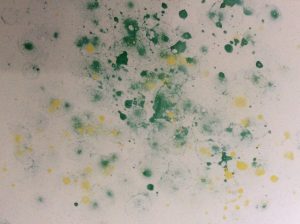
Enjoy!
Ms. Lillian
